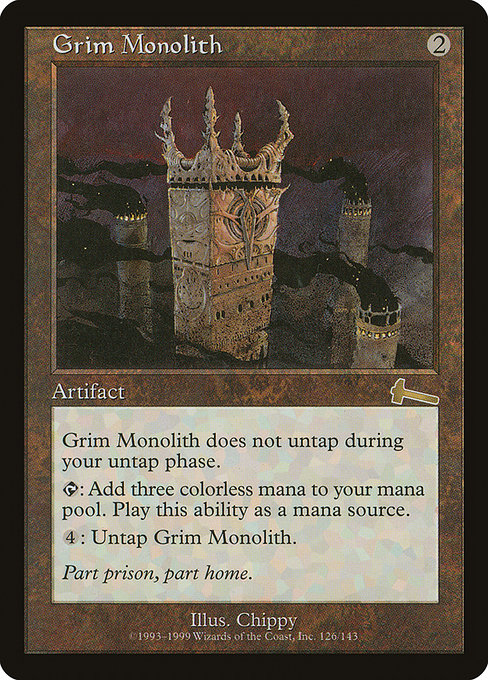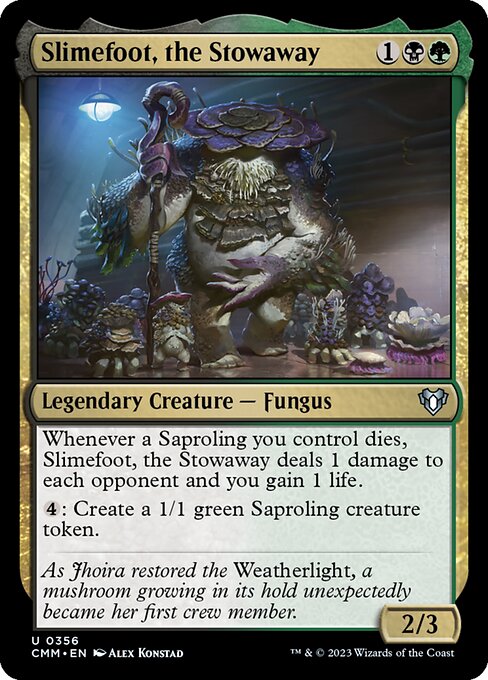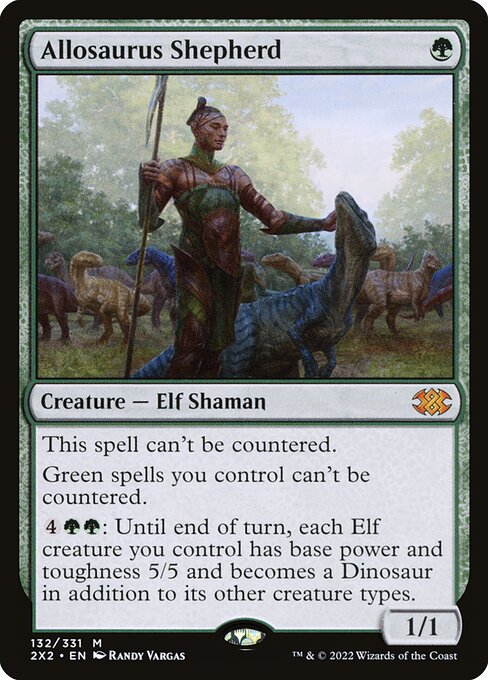We’re not far from the height of Commander Legends spoiler season, and there’s a lot of ground to cover in the next few weeks. As someone who’s been with Commander since 2012, I’m both excited and anxious over what this set will mean. It’s been the year of Commander, and the format has gone through some drastic changes over the past few years. There are arguments for and against this hands-on approach, but since we’re now in uncharted territory, we can only wait and see what this set will entail.
As a brief disclaimer: while there have been discussions over internet leaks, today’s article will not mention anything about that. It’s an open and honest discussion on the set, without stealing the thunder of the content creators that got preview cards leaked.
Hopes
Needed and Functional Reprints
As someone who works for a living, I too love a good reprint. As the format grows in popularity, more and more cards are sneaking upwards in price. Commander Legends is a unique opportunity to really go after reprints, in a way that hasn’t been done with preconstructed decks or masters sets. Personally, I’m confident that Commander Legends will hit a lot of cards, like mana rocks and Craterhoof Behemoth. But cards like Cabal Coffers, Vedalken Orrery, and Dockside Extortionist don’t exactly fit in a conventional Limited environment. Standard draft sets have a few rares or mythics that do little in Limited, so there may be room here for a few of these at least.

Outside of needed reprints, I think Wizards could explore more functional reprints here. There are plenty of Reserve List cards in the format that will never come back, so creating functional reprints is our way of getting around that blockade. Growing Rites of Itlimoc and Storm the Vault did this right, getting Gaea’s Cradle and Tolarian Academy into the hands of budget players. But it doesn’t have to just be flip cards, though. What might a functional reprint of Grim Monolith or Gilded Drake look like? Deep Forest Hermit is how we saw a reprint of Deranged Hermit, so more functional reprints aren’t out of the question.
Reasons to Play Two-Color Decks
There is already plenty of chatter about what the monocolor partners will be like. While we’ve only seen a few, they have the potential to make some big changes to the format. However, what excites me most is that they give players more reasons to play two-color decks.
In my ongoing guild primer series, we discuss how each two-color pair stands out in the format. Each installment ends with a summary of their strengths and weaknesses, and why players could be excited about that strategy. However, when I finish each installment, the same thought creeps into my head: “Why doesn’t this deck add a third color?”

These days, multicolor legends are everywhere, with many being 3+ colors. Golos, Tireless Pilgrim is now the most-played commander, with the likes of Atraxa, Praetor’s Voice and Kenrith, the Returned King not far behind. Mana fixing keeps getting easier, so there are fewer and fewer drawbacks to playing multicolor decks.
However, despite the format trending towards 3+ colors, there’s something so unmistakably cool about piloting a two-color deck. Restrictions breed creativity, and these new partners are bound to get people brewing. I’m here for it, and I think Commander Legends will bring us some fun new ways to get back to basics.
Ways for Monowhite to Get Ahead
Magic players have been swimming in discussions about color balance. For Commander, one of the most hotly-discussed topics is on monowhite strategies. You only need to wade in to your ankles before you hear people talking about a lack of ramp and card draw.
Wizards of the Coast is listening to the feedback, though, and they’re slowly reshaping what monowhite can do. However, what we’ve seen are more ways for white to catch up, and less ways for it to get ahead. For instance, Verge Rangers and Cartographer’s Hawk were met with excitement, but quickly fell flat in the format. One could argue that their designs weren’t pushed enough, but the problem also lies in catch up cards themselves. The problem with having too many catch up mechanisms is that they cannibalize each other. Once a player catches up, every other catch up card is dead in their hand. Keeper of the Accord is the most recent addition to this category; good in theory, but not a way for monowhite to get ahead.

Smothering Tithe is a massive leap forward when it comes to helping White decks get ahead. Opinions are mixed on if it’s an overcorrection, but monowhite needs all the help that it can get. Instead of just a few game-defining staples, though, there needs to be systemic change in how monowhite gets ahead. I hope that Commander legends can bring the incremental changes to White to help it succeed in this singleton format.
New Cards for Multiplayer Mechanics
When given the chance, Wizards has made some fantastic multiplayer mechanics. These put Commander in a special place among formats, with how they add social elements to gameplay. Prowess might get players to cast spells, but Will of the Council gets people talking. Borrowing multiplayer mechanics from the past is a surefire way to encourage interaction, and Wizards would be smart to take this move for a multiplayer set.

Monarch is another beloved mechanic, and I would love to see a return here. Not only does it encourage players to attack each other, but it provides a steady source of card advantage for those that defend the crown. This is great for decks that lack the draw capabilities of playing Blue, Black, Red, or Green. However, a few Monarch cards have trickled into 1v1 formats, and can upend the play experience there. This mechanic simply wasn’t designed with dual formats in mind. It creates an unbalanced mini-game that can warp the experience for both players. So, creating new Monarch cards is a fine line to tread.
Outside of the commonly-played mechanics, there are more that can grow in the format. Assist saw only 16 cards in Battlebond, while Join Forces got only five. Both are areas which could be explored more, instead of being reprint fodder to fill in the gaps. With a set as large as Commander Legends, this could very well be the case.
Fears
Partner Becoming Too Commonplace
Partner is an inherently strong mechanic, and a delicate thing to design with. I’m confident that Wizards tested the ones in the set, even when Thrasios, Triton Hero exists. However, what worries me is the possibility of Partner gaining a large foothold. I want players to still look at cards like Slimefoot, the Stowaway or Brion Stoutarm and want to brew around them. I don’t want the question to become, “Why am I playing this when I could be playing a Partner deck instead?” Gameplay would look quite different if Partner decks became the new default. There are countless decks that can be built around interesting single commanders; I don’t want Partner to take that from the format.
The original Partners of Commander 2016 saw widespread play at the time, but then faded considerably. Four-color Thrasios decks are still common, but we’re far from the days of seeing Sidar Kondo of Jaruuma and Silas Renn, Seeker Adept at the table. You could argue that time filtered all but the best partners out, but with so many new ones coming into the fold, we’re set for another wave of these decks. I’m cautiously optimistic.

Even More “Goodstuff” Value Engine Commanders
Dominaria brought upon what I refer to as The Third Era of legendary creature design for Commander. The top-performing legends set off a wave, bringing more open-ended value engines to the command zone. Compared to the days of Kaalia of the Vast or Sharuum the Hegemon, these new cards have walls of text that use every square inch. These commanders can seriously outclass the rest at the table, drawing more cards and ramping faster than the competition. They reach a point where it’s difficult to design a low-power Kinnan, Bonder Prodigy deck.
It’s worth remembering that Commander means a lot of different things to each of us, so if this is your preferred playstyle, that’s totally fine. I’m not here to tell you that there’s a right or wrong way to do this. There are only so many of these value engines the format can take however, before they push the majority of other options out. I’m not afraid of powerful cards per se, but I am afraid of making players feel like they have to play a value engine Commander to keep up.
Substantially More Auto-Staples
Since Wizards started designing for Commander, we’ve seen a myriad of attempts to bring Commander-centric cards into the fold. Some have fallen short, and some have become format staples. Some argue that this devalues the spirit of the format through homogeneity, reducing the amount of unique cards we run in our decks. It is a concerning trend. For the longest time, Commander has been the format of digging up quirky, underappreciated cards and bringing them into the limelight. I don’t want the format to lose that.

Command Tower and Arcane Signet are the poster children of this discussion, but there are more incoming. Unless these pushed cards are printed into the ground, they can command high prices right out of the gate. It didn’t take long for Fierce Guardianship, Dockside Extortionist, and Teferi’s Protection to start fetching prices over $25 each. With product availability being a challenge during COVID-19, we may run into a Jumpstart situation. Allosaurus Shepherd currently sets you back $100, which is $15 more than a Mana Crypt from Double Masters.
They can reduce the diversity in the format, and at a significant financial cost, so I worry about this for Commander Legends.
Time Will Tell
To reiterate from before, I’m cautiously optimistic about Commander Legends. On one hand, we’ve seen Commander products create new archetypes for players. They’ve also been pretty good at providing some steady reprints, like Sol Ring and Lightning Greaves. However, Commander-centric design can sometimes upend the balance of the format. We can see new staples outclass beloved cards that weren’t designed with Commander in mind, which can lead to talks about power creep.
Some people want as much Commander product as possible, and others want Wizards to ignore the format completely. For the rest of us in the middle, we’re left to wait and see what this means. Wizards has something good right now, I just don’t want them to jump the Sharktocrab and throw it all away.
Travis is a Virginia-based player and writer, who has been turning things sideways since Starter 1999. He primarily plays Commander, Pauper, and Legacy, and has a passion for introducing new players to the game. When he isn’t making people pay the Thalia tax, he can be found mountain biking or playing the guitar. You can follow his exploits here on Twitter and Instagram.

